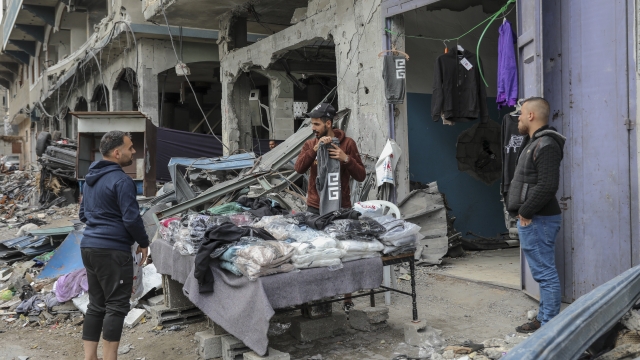With up to 80% of the population now displaced, the war in Gaza is quickly becoming one of the world's worst humanitarian disasters.
Israel's Gaza offensive has forced as many as 1.8 million Palestinians to flee their homes and find shelter elsewhere in the Gaza Strip, according to the UN — that's virtually everyone living there.
Shelters in southern and central Gaza are so crowded that the conditions are visible from space. Using imagery from Planet Labs, Scripps News has found more than 80 sites in southern and central Gaza housing displaced people.
Some of the largest concentrations of displaced people are at three locations: a UN-run college and the Nasser Hospital, both in Khan Yunis, and a large UN complex near the Egyptian border.
Video from The Associated Press shows the central yard of the UN college on Oct. 19. A month later, the same area seen in imagery from Planet Labs shows it has been filled with tents and temporary structures, indicating a surge in refugees fleeing the fighting in the north.
SEE MORE: US military planes providing humanitarian aid for Gaza
The vast majority of facilities housing displaced people in Gaza are schools, and they're overwhelmed and overcrowded.
According to the United Nations, the average number of displaced people per shelter has surpassed 9,000. That's more than four times the intended capacity. On average, a shelter there is only designed to handle 2,000 people.
This kind of overcrowding, combined with the loss of basic necessities including functioning health and sanitation systems, is adding to dire humanitarian concerns. "We need 200 aid trucks a day continuously for two months at least to meet the needs. We need even more fuel so we can operate the services and sectors we support, like water desalination, sewage, hospitals, bakeries, UNRWA services and communications. The aid going in at the moment is just a drop in the ocean of humanitarian needs," said Adnan Abu Hasna, a UNRWA spokesperson.
So far, the pause in fighting between Hamas and the Israel Defense Forces has allowed some aid into areas of Gaza that desperately need it. But with nearly the entire population of Gaza forced out of their homes, the needs of civilians in the region are only expected to grow.
Trending stories at Scrippsnews.com



